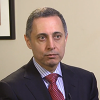Premier - Local Orthopaedic Surgeon
-
What is Arthroscopic Shoulder Surgery
Shoulder arthroscopy is surgery that uses a tiny camera called an arthroscope to examine or repair the tissues inside or around your shoulder joint. The arthroscope is inserted through a small cut (incision) in your skin
-
Treatment of Shoulder Pain
he patient should exhaust all non-operative type options such as medications, anti-inflammatory medication, analgesic medication, physiotherapy to keep the joints supple, stretching to keep the joints supple.
If the non-operative options fail, then the patient is looking at surgical options. The surgical options obviously would be, depending on the state of disease, one could offer the option of an arthroscopic cleanup of the joint, a debridement of the joint, in early stage disease.









